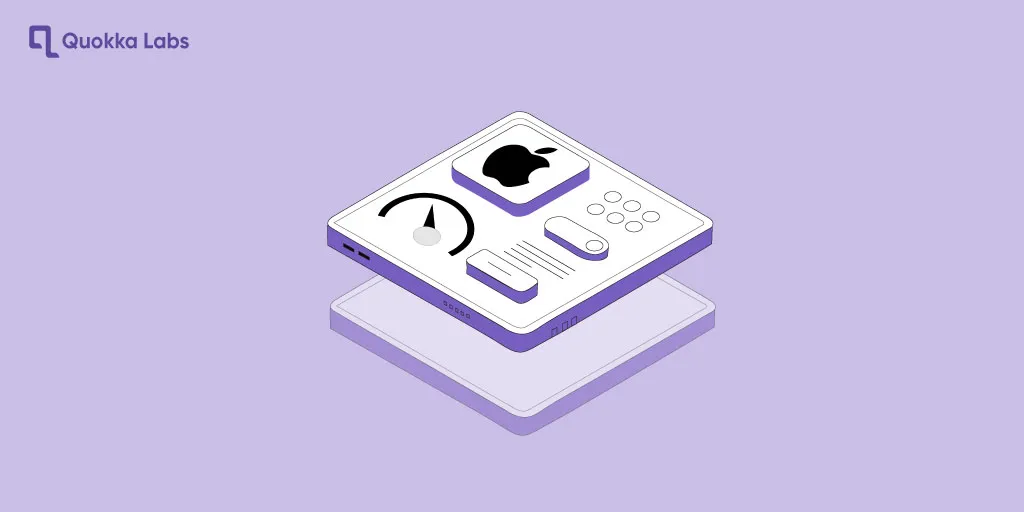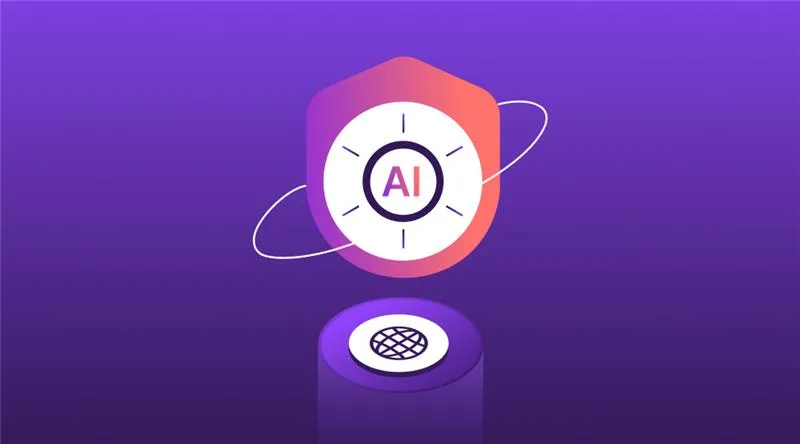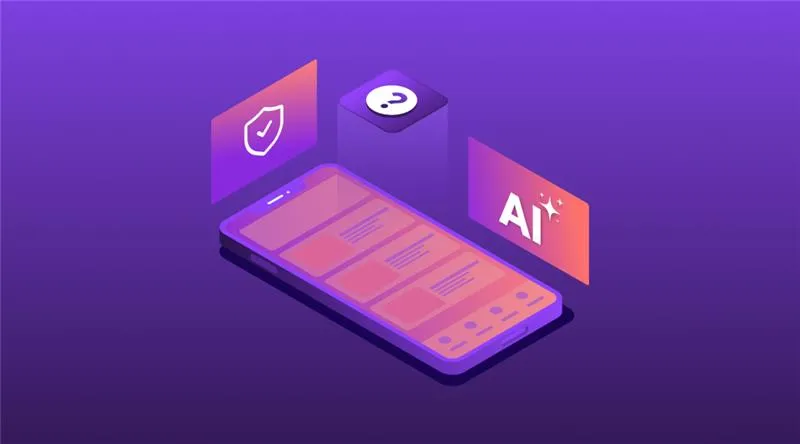Technology

5 min

Boost iOS app performance with essential tips. Enhance speed, efficiency, and user experience for competitive advantage in the market

By Mayank Ranjan
12 Feb, 2024
In the fast-paced world of mobile app development, optimizing the performance of iOS apps is critical to ensure user satisfaction and app success. A high-performing app enhances user experience and drives user engagement and retention.
Whether you're a expert developer or beginner, join us on this journey to elevate your app's performance and leave a lasting impression on your users. Let's embark on the path to excellence and make your iOS app shine with our iOS app development service partners.
Optimizing the performance of iOS apps is key for providing a smooth and responsive UX. Here are some key strategies and tips to help you achieve better performance:
Efficient coding practices lay the groundwork for a high-performing iOS app. By focusing on algorithm efficiency, using Swift over Objective-C, implementing asynchronous programming, reducing function calls, and eliminating memory leaks, developers can build a solid foundation for superior app performance. Let's discuss this in detail.
Algorithms play a crucial role in app performance. Analyze and optimize algorithms for better time complexity, reducing the execution time of critical operations. Use Swift's powerful standard library with optimized algorithms to achieve better performance.
Swift is Apple's modern programming language offering better performance, safety, and readability than Objective-C. Migrating to Swift can lead to significant performance improvements.
Implement Grand Central Dispatch (GCD) and Operation Queues to handle time-consuming tasks in the background. Asynchronous programming ensures that the UI remains responsive, providing a smoother user experience.
Minimize the number of function calls to decrease overhead. Refactor code to avoid redundant calls and focus on optimizing performance-critical functions.
Use Automatic Reference Counting (ARC) to manage memory automatically and prevent memory leaks. ARC ensures that objects are deallocated when no longer needed, improving stability and performance.
Efficient resource management is essential for minimizing app size and improving loading times. By optimizing image assets, utilizing asset catalogs and slicing, managing memory for resources, and minimizing asset size, developers can enhance app performance and user experience. Let's discuss this in detail.
Images contribute significantly to an app's size. Optimize images to the appropriate resolution and format, reducing the app's size and improving loading times. Consider using vector-based assets for scalable graphics.
Organize resources in asset catalogs and enable asset slicing to deliver optimized assets for specific device configurations. Asset slicing ensures users download only the necessary assets, reducing bandwidth usage and app size.
Efficiently manage memory for assets, releasing unused resources promptly to prevent unnecessary memory consumption. Utilize lazy loading to load assets on demand, conserving memory.
Choose appropriate file formats and resolutions for resources to reduce their size. The compressed audio and video files can also contribute to a smaller app size.
Network efficiency is crucial for apps that rely on internet connectivity. By focusing on batch network requests, background data fetching, efficient data transfer, network reachability, and caching and prefetching, developers can provide a seamless user experience. Let's discuss this in detail.
Combine multiple network requests into a single batch request to reduce latency and improve overall efficiency. Minimizing the number of network requests can significantly improve app performance, especially in data-intensive apps.
Implement background fetch to update app content regularly, ensuring it remains up-to-date when users open it. This provides users with the latest information without causing delays.
Optimize data payloads using efficient data formats and compression techniques. Reducing the amount of data transferred over the network can lead to faster load times and improved app performance.
Handle network reachability gracefully by providing appropriate user feedback when the device loses internet connectivity. Utilize Reachability APIs to monitor network status and adjust app behavior accordingly.
Utilize caching and prefetching to store frequently accessed data locally. Caching reduces the need for repeated network requests, enhancing app responsiveness and reducing server load.
Efficient memory management is essential for a stable and efficient iOS app. Hire dedicated iOS Developers can optimize memory usage and prevent crashes by adopting Automatic Reference Counting, implementing object pooling, using weak references, and conducting memory profiling. Let's discuss this in detail.
ARC is a powerful memory management technique that automatically manages memory for objects. Use ARC to avoid memory leaks and crashes caused by improper memory management.
Implement object pooling to reuse objects instead of creating and destroying them repeatedly. Object pooling reduces the overhead of memory allocation and deallocation, enhancing app performance.
Use weak references when appropriate to avoid intense reference cycles, which can lead to memory leaks. Weak references prevent retention cycles and improve memory efficiency.
Regularly profile the app's memory usage using tools like Xcode Instruments to identify potential memory leaks and areas for optimization. Memory profiling helps developers pinpoint memory hotspots and inefficiencies.
Reducing the app's size improves download times and increases user satisfaction. By utilizing dynamic frameworks, modularization, asset thinning, and optimizing third-party dependencies, developers can create leaner and faster iOS apps. Let's discuss this in detail.
Utilize dynamic frameworks to load framework components on-demand, reducing the app's binary size. Dynamic frameworks allow apps to load only the necessary components when required.
Divide the app into modules and load them only when necessary. Modularization improves app launch times and overall responsiveness by reducing the initial load on the system.
Enable asset catalog slicing to deliver app bundles optimized for specific device configurations. Asset thinning ensures that users download only the required assets for their devices, leading to smaller app sizes.
Limit the number of third-party libraries and frameworks to reduce the app's size and potential conflicts. Choose lightweight and essential dependencies to minimize the app's footprint.
Effective performance testing and continuous optimization are vital for sustained app success. iOS Developers can maintain app competitiveness and responsiveness by implementing automated performance testing, user-centric testing, crash reporting, and regular review and improvement. Let's discuss this in detail.
Implement automated performance tests to detect and address performance regressions during development. Automated testing ensures that performance issues are caught early in the development process.
Conduct real-device testing with diverse user scenarios to gather insights and identify potential bottlenecks. User-centric testing helps developers understand real-world usage patterns and performance challenges.
Integrate crash reporting tools and performance monitoring to address user experience issues proactively. Monitoring app crashes, and performance metrics help identify and resolve issues quickly.
Continuously review performance metrics and conduct optimization iterations to maintain app competitiveness. The mobile landscape evolves rapidly, and staying ahead requires constant vigilance and improvement.
Thats it!!! By applying the strategies and techniques discussed in this blog post, iOS developers can create high-performing apps that deliver exceptional user experiences.
If you don't optimize your iOS app, it can have several negative consequences that can severely impact the user experience and overall success of your application:
Slow Performance: Unoptimized apps tend to run slowly and sluggishly. Users will experience delayed response times, slow transitions between screens, and unresponsive interactions. It can frustrate users and lead to a poor user experience.
High Resource Consumption: Apps that are not optimized can consume excessive CPU, memory, and battery resources. This can drain the device's battery quickly, causing frustration for users who need their devices to last throughout the day.
Crashes and Instability: Unoptimized apps are more likely to crash or become unstable, especially on devices with limited resources. Memory leaks, unhandled exceptions, and other issues can lead to unexpected app crashes, which tarnishes your app's reliability.
Negative Reviews and Uninstalls: Users quickly leave negative reviews and uninstall apps that perform poorly. Poor reviews can significantly impact your app's reputation and deter potential users from downloading it.
Loss of Users and Revenue: Users will likely stick around only if your app consistently performs well. They might switch to competing apps that offer a better experience. This loss of users can lead to a decrease in app revenue and potential business opportunities.
Missed Business Goals: If your app is fast and reliable, it may fail to meet its intended business goals. Whether it's e-commerce transactions, content consumption, or engagement with the app's features, poor performance can deter users from engaging in desired actions.
User Abandonment: Unoptimized apps can result in high bounce rates, where users leave the app shortly after opening it due to frustration with its performance. It hampers user engagement and prevents users from experiencing your app's total value.
Incompatibility with New Devices and OS Versions: Unoptimized apps may need to help function correctly as new iOS devices and operating system versions are released. It can lead to UI glitches, layout issues, and other problems that degrade the app's visual appeal and usability.
Increased Support Burden: Apps that need to be optimized are more likely to generate user complaints and support requests. It burdens your support team more, requiring them to troubleshoot and address performance-related issues.
Lack of Differentiation: In a competitive app market, user expectations for performance are high. If your app is not optimized, it won't stand out from the competition, and users will gravitate towards apps that offer smoother and more responsive experiences.
Hence, failing to optimize your iOS app can result in user dissatisfaction, lost revenue, and a tarnished brand image. Prioritizing performance optimization is crucial in ensuring your app's success and providing users with a positive and engaging experience.
Optimizing performance for iOS apps is a multifaceted and ongoing process that demands continuous attention and improvement. Prioritizing performance optimization from the outset of development, regularly testing and profiling the app, and diligently addressing bottlenecks will result in an iOS app that comes out from crowd in app market.
Users will appreciate the app's responsiveness, speed, and stability, leading to increased user satisfaction, retention, and positive reviews. Stay committed to continuous improvement, user feedback, and emerging technologies to keep your iOS app at the forefront of user preference and ensure its success in the long run.
If you want to discuss your iOS app development idea, contact us to develop an MVP for your business needs immediately. And remember, we always design top-notch products and ensure their successful launch. Good luck, and keep building! Thanks!!!
Ans: Common bottlenecks include slow network requests, inefficient memory usage, excessive CPU utilization, unoptimized UI rendering, and memory leaks.
Ans: Strategies include minimizing network requests, using caching effectively, optimizing API payloads, implementing lazy loading, and leveraging techniques like HTTP/2 and Content Delivery Networks (CDNs).
Ans: To optimize UI rendering, use efficient layout designs, reduce the number of subviews, implement view recycling, utilize Auto Layout properly, and consider using Core Animation for smooth animations.
Ans: Memory leaks can be prevented by understanding intense reference cycles, using weak or unowned references, using ARC (Automatic Reference Counting), and thoroughly testing your app with Instruments.
Top 11 Must-Have Features of a Custom Web Application in 2026
By Dhruv Joshi
5 min read
Generative AI Tech Stacks: Choosing the Right Tools for Scalable AI Development
By Dhruv Joshi
5 min read
Choosing Best Tech Stack for Web App Development: Performance, Cost, and Scalability
By Dhruv Joshi
5 min read
Top 9 Tech Stacks for Scalable Web Application Development
By Dhruv Joshi
5 min read

Technology

7 min
Generative AI is moving fast into enterprises, from banks to hospitals to government agencies. Adoption is rapid, but security planning lags. Unlike traditional systems, these models can be exploited through prompt injection, poisoned data, or manipulated to leak sensitive information. They are also misused for phishing, deepfakes, and malicious code.


Technology

7 min
AI-powered Web Application Firewalls (WAFs) go beyond static rules by using machine learning, anomaly detection, and predictive analysis to block zero-day threats, reduce false positives, and protect APIs at scale. Unlike traditional WAFs, they self-learn, adapt in real time, and cut operational costs while improving compliance and trust.


Technology

5 min
AI is redefining mobile app security by transforming how threats are detected, tested, and prevented. From continuous monitoring and fraud detection to compliance with regulations, AI ensures apps remain resilient against modern risks. This means safer apps, protected users, and stronger businesses. Investing in AI-driven security today builds trust, drives growth, and secures long-term competitive advantage.


Feeling lost!! Book a slot and get answers to all your industry-relevant doubts